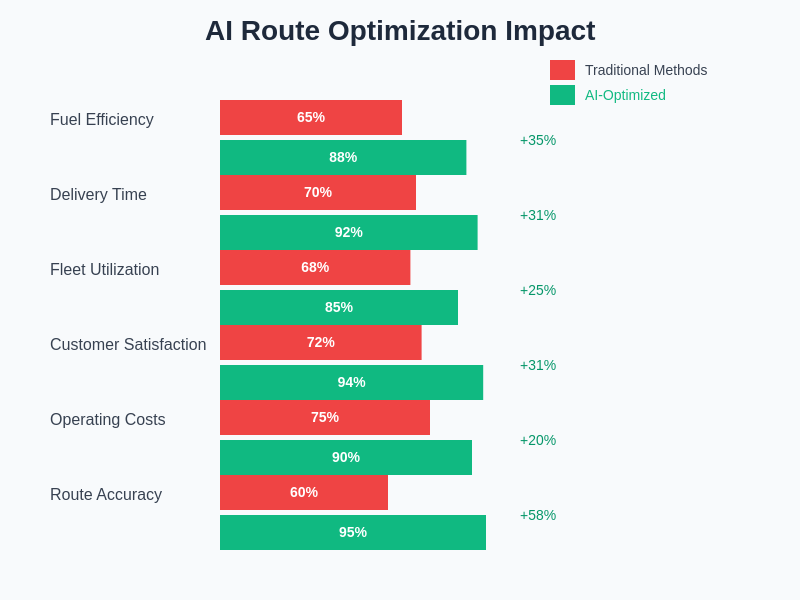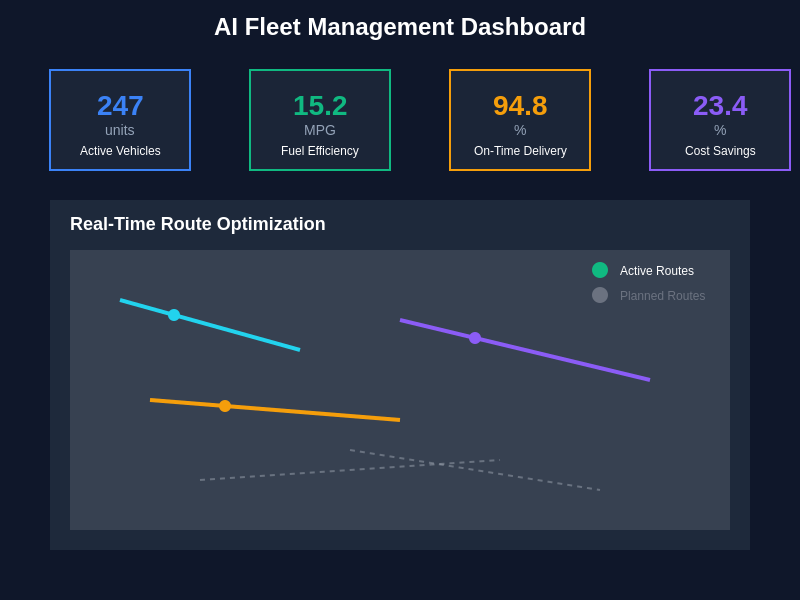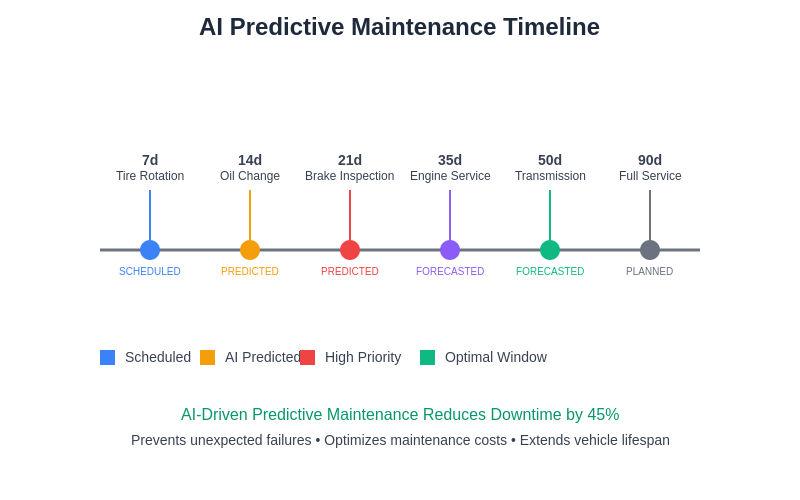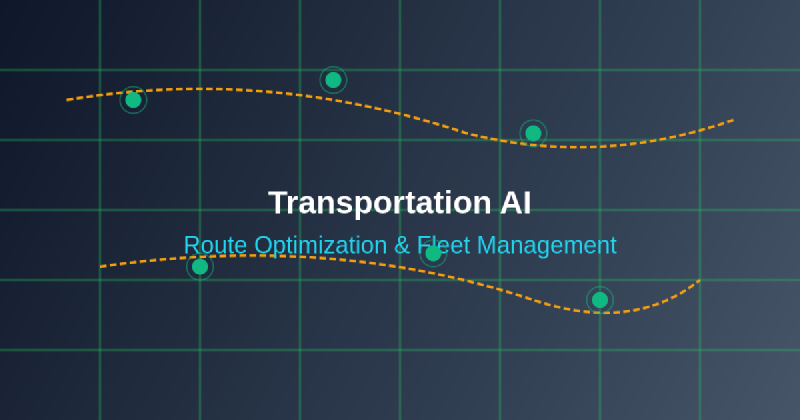The transportation industry stands at the precipice of a technological revolution that promises to fundamentally reshape how goods and people move across our interconnected world. Artificial intelligence has emerged as the driving force behind this transformation, introducing unprecedented levels of efficiency, sustainability, and intelligence to transportation systems that have remained largely unchanged for decades. Through sophisticated algorithms, machine learning capabilities, and real-time data processing, AI is creating transportation networks that adapt dynamically to changing conditions while optimizing performance across multiple variables simultaneously.
Explore the latest developments in AI transportation technology to understand how cutting-edge innovations are being implemented across different sectors of the transportation industry. The integration of artificial intelligence into transportation systems represents far more than simple automation; it embodies a comprehensive reimagining of how logistics networks operate, how resources are allocated, and how transportation challenges are approached and resolved in an increasingly complex global economy.
The Foundation of Intelligent Transportation Systems
The emergence of AI-powered transportation systems has been built upon decades of technological advancement in computing power, sensor technology, and data analytics capabilities. Modern transportation networks generate enormous quantities of data from GPS tracking devices, traffic sensors, weather monitoring systems, vehicle telematics, and customer interaction platforms. This vast information ecosystem provides the raw material that artificial intelligence systems transform into actionable insights for optimizing transportation operations at every level of complexity.
The sophistication of contemporary AI transportation systems lies in their ability to process and analyze multiple data streams simultaneously while making real-time decisions that consider numerous variables including traffic conditions, weather patterns, vehicle capacity, fuel consumption, driver availability, customer preferences, and regulatory constraints. This multidimensional approach to transportation optimization enables systems to achieve efficiency levels that would be impossible through traditional manual planning methods or simple automated scheduling systems.
Revolutionary Route Optimization Technologies
Route optimization represents one of the most immediately impactful applications of artificial intelligence in transportation, fundamentally changing how delivery routes are planned, executed, and continuously improved. Traditional route planning relied heavily on static information and human intuition, often resulting in suboptimal paths that failed to account for real-time conditions or dynamic variables that could significantly impact delivery efficiency and cost-effectiveness.
Modern AI-powered route optimization systems utilize sophisticated algorithms that can process thousands of variables simultaneously to generate optimal routing solutions that adapt in real-time to changing conditions. These systems consider factors such as current traffic patterns, historical congestion data, weather forecasts, vehicle specifications, driver work schedules, customer delivery preferences, fuel costs, toll charges, and even predictive maintenance requirements to create routing solutions that maximize efficiency while minimizing operational costs.

The quantifiable benefits of AI-driven route optimization demonstrate substantial improvements across all key performance metrics, with particularly impressive gains in fuel efficiency and delivery accuracy that directly translate to reduced operational costs and enhanced customer satisfaction.
Discover advanced AI capabilities with Claude for developing custom transportation optimization solutions that can be tailored to specific industry requirements and operational constraints. The power of modern AI routing systems extends beyond simple point-to-point optimization to encompass complex multi-stop routes, time-window constraints, capacity limitations, and dynamic rerouting capabilities that respond instantly to unexpected disruptions or opportunities.
Advanced Fleet Management Through Machine Learning
Fleet management has evolved from basic vehicle tracking to comprehensive ecosystem management that optimizes every aspect of vehicle operations through intelligent automation and predictive analytics. AI-powered fleet management systems continuously monitor vehicle performance, driver behavior, maintenance requirements, fuel consumption patterns, and operational efficiency metrics to identify optimization opportunities and prevent potential problems before they impact operations.
The integration of machine learning algorithms into fleet management enables systems to learn from historical data patterns and continuously improve their predictive accuracy and optimization recommendations. These systems can identify subtle patterns in vehicle performance data that indicate impending maintenance needs, optimize fuel consumption through intelligent routing and driving behavior recommendations, and ensure regulatory compliance through automated monitoring and reporting capabilities.
Modern fleet management systems leverage artificial intelligence to optimize vehicle assignment decisions, matching specific vehicles to particular routes or tasks based on factors such as cargo requirements, distance, terrain, weather conditions, and vehicle specifications. This intelligent matching process ensures that each vehicle operates at optimal efficiency while reducing wear and tear, extending vehicle lifespans, and minimizing operational costs across the entire fleet.

The comprehensive nature of AI-powered fleet management creates a unified operational overview that enables real-time monitoring, predictive analytics, and automated decision-making across all aspects of fleet operations, from individual vehicle performance to system-wide optimization strategies.
Predictive Maintenance and Asset Optimization
The implementation of predictive maintenance systems represents a paradigm shift from reactive repair strategies to proactive maintenance approaches that prevent breakdowns before they occur. AI-powered predictive maintenance systems continuously analyze data from vehicle sensors, monitoring everything from engine performance and brake wear to tire pressure and transmission efficiency to identify patterns that indicate potential failure points.
These sophisticated systems utilize machine learning algorithms trained on vast datasets of vehicle performance information to recognize subtle indicators of component degradation that would be impossible for human technicians to detect through traditional inspection methods. By identifying maintenance needs before failures occur, these systems dramatically reduce unexpected downtime, extend vehicle lifespans, and optimize maintenance scheduling to minimize operational disruptions.
The economic impact of AI-driven predictive maintenance extends far beyond simple cost savings from prevented breakdowns. These systems enable fleet operators to optimize maintenance scheduling, reduce inventory requirements for spare parts, improve vehicle availability, and extend the operational life of expensive transportation assets while maintaining peak performance levels throughout the vehicle lifecycle.

The strategic scheduling of maintenance activities through AI analysis creates optimal maintenance windows that minimize operational disruptions while ensuring vehicle reliability and safety standards are consistently maintained across the entire fleet lifecycle.
Real-Time Traffic Analysis and Dynamic Routing
The ability to analyze and respond to real-time traffic conditions represents one of the most visible benefits of AI integration in transportation systems. Advanced traffic analysis systems process data from multiple sources including GPS devices, traffic cameras, road sensors, mobile applications, and historical traffic patterns to create comprehensive real-time pictures of traffic conditions across entire transportation networks.
These systems utilize sophisticated algorithms to predict traffic flow changes, identify potential congestion points before they develop, and automatically adjust routing recommendations to avoid delays and optimize travel times. The predictive capabilities of modern traffic analysis systems enable proactive route adjustments that can prevent vehicles from becoming trapped in developing traffic situations, significantly improving delivery reliability and customer satisfaction.
Enhance your research capabilities with Perplexity to stay informed about the latest developments in traffic management technologies and their applications across different transportation sectors. The integration of real-time traffic analysis with dynamic routing capabilities creates transportation systems that adapt continuously to changing conditions, ensuring optimal performance even in highly congested urban environments or during unexpected disruptions.
Supply Chain Integration and Logistics Optimization
The transformation of supply chain management through artificial intelligence extends far beyond individual route optimization to encompass entire logistics networks that span multiple modes of transportation, distribution centers, and customer delivery points. AI-powered supply chain optimization systems analyze complex networks of suppliers, manufacturers, warehouses, distribution centers, and delivery destinations to identify opportunities for efficiency improvements and cost reductions across the entire logistics chain.
These comprehensive systems consider factors such as inventory levels, production schedules, seasonal demand patterns, transportation capacity, storage constraints, and customer requirements to optimize the flow of goods through complex multi-modal transportation networks. The ability to optimize across multiple variables simultaneously enables supply chain operators to reduce inventory carrying costs, minimize transportation expenses, improve delivery reliability, and enhance customer satisfaction through more predictable and efficient service delivery.
Modern supply chain AI systems also incorporate sustainability considerations into their optimization algorithms, helping companies reduce their environmental impact through more efficient transportation routing, mode selection, and consolidation strategies. These capabilities enable organizations to meet environmental targets while maintaining operational efficiency and cost-effectiveness, creating sustainable competitive advantages in increasingly environmentally conscious markets.
Autonomous Vehicle Integration and Coordination
The gradual integration of autonomous vehicles into transportation networks represents one of the most significant technological shifts in the industry, requiring sophisticated AI systems to coordinate between human-driven and autonomous vehicles while maintaining safety and efficiency standards. AI coordination systems manage the complex interactions between different types of vehicles, optimizing traffic flow, preventing conflicts, and ensuring safe operation in mixed-traffic environments.
These coordination systems utilize advanced communication protocols and prediction algorithms to anticipate the behavior of both human drivers and autonomous systems, creating seamless integration that maximizes the benefits of automation while maintaining safety standards. The ability to coordinate between different levels of automation enables transportation networks to gradually transition to higher levels of autonomy while maintaining operational continuity and safety.
The implementation of autonomous vehicle coordination systems also enables new forms of transportation optimization that were previously impossible, such as coordinated convoy operations, dynamic vehicle sharing, and real-time capacity optimization that can significantly improve transportation efficiency while reducing environmental impact and operational costs.
Customer Experience Enhancement Through AI
The application of artificial intelligence to customer experience optimization has transformed how transportation services interact with their clients, providing personalized service delivery, proactive communication, and flexible service options that adapt to individual customer preferences and requirements. AI-powered customer service systems analyze customer behavior patterns, delivery preferences, and historical interactions to provide personalized service experiences that enhance satisfaction and loyalty.
These systems enable features such as predictive delivery notifications, dynamic delivery window adjustments, personalized routing preferences, and proactive exception management that keeps customers informed about potential delays or service disruptions before they impact delivery schedules. The ability to provide proactive, personalized communication significantly improves customer satisfaction while reducing the workload on customer service teams.
Modern AI customer service systems also enable dynamic service customization that adapts to changing customer requirements, seasonal patterns, and special circumstances without requiring manual intervention. This flexibility enables transportation service providers to offer more responsive, personalized service while maintaining operational efficiency and cost-effectiveness across diverse customer bases.
Environmental Impact Optimization
The integration of environmental considerations into AI-powered transportation optimization represents a critical development in creating sustainable transportation systems that balance operational efficiency with environmental responsibility. Modern optimization systems incorporate carbon footprint calculations, fuel consumption optimization, and emission reduction strategies into their decision-making processes, enabling transportation operators to reduce their environmental impact while maintaining service quality and cost-effectiveness.
These systems analyze factors such as vehicle fuel efficiency, route distance, traffic conditions, and delivery consolidation opportunities to identify strategies that minimize environmental impact while optimizing operational performance. The ability to balance multiple objectives simultaneously enables transportation operators to meet sustainability targets without compromising service delivery or financial performance.
AI-powered environmental optimization also enables new approaches to transportation planning that prioritize sustainable practices, such as electric vehicle route optimization that considers charging station availability and battery performance, consolidation strategies that reduce total vehicle miles traveled, and mode selection optimization that chooses the most environmentally efficient transportation options for different types of cargo and delivery requirements.
Safety and Risk Management Systems
The implementation of AI-powered safety and risk management systems has dramatically improved the safety profile of transportation operations by providing real-time monitoring, predictive risk assessment, and automated intervention capabilities that prevent accidents and reduce liability exposure. These systems continuously analyze data from vehicle sensors, driver behavior monitoring systems, weather conditions, and traffic patterns to identify potential safety risks before they result in accidents or incidents.
Advanced safety systems utilize machine learning algorithms to recognize patterns in driver behavior, vehicle performance, and environmental conditions that indicate elevated risk levels, enabling proactive interventions such as route adjustments, driver coaching, or vehicle reassignment that prevent potentially dangerous situations from developing. The predictive capabilities of these systems enable transportation operators to maintain exceptional safety records while optimizing operational efficiency.
The integration of safety considerations into AI transportation systems also enables comprehensive risk management that considers factors such as cargo value, route security, weather conditions, and driver qualifications to optimize transportation operations while minimizing exposure to various types of operational risks and potential liabilities.
Performance Analytics and Continuous Improvement
The analytical capabilities of AI-powered transportation systems provide unprecedented insights into operational performance, enabling continuous improvement processes that systematically identify and address inefficiencies across all aspects of transportation operations. These systems generate comprehensive performance metrics that cover everything from fuel efficiency and delivery reliability to driver productivity and customer satisfaction, providing the data foundation for evidence-based optimization strategies.
Advanced analytics systems utilize machine learning algorithms to identify subtle patterns and correlations in operational data that reveal optimization opportunities that would be impossible to detect through traditional analysis methods. These insights enable transportation operators to make targeted improvements that compound over time, creating continuous improvement cycles that systematically enhance operational performance and competitive positioning.
The predictive capabilities of modern analytics systems also enable proactive performance management that identifies potential issues before they impact operations, allowing for preventive interventions that maintain optimal performance levels while avoiding costly disruptions or service failures.
Integration Challenges and Implementation Strategies
The successful implementation of AI-powered transportation systems requires careful consideration of integration challenges, data quality requirements, and change management processes that ensure smooth transitions from legacy systems to advanced AI-enabled operations. Organizations must develop comprehensive implementation strategies that address technical integration requirements, staff training needs, and organizational change management processes while maintaining operational continuity during transition periods.
Modern AI transportation systems require high-quality data inputs from multiple sources, necessitating investments in data collection infrastructure, data cleaning processes, and integration platforms that can consolidate information from diverse systems and sources. The success of AI implementation depends heavily on the quality and completeness of underlying data, making data management a critical component of any AI transportation initiative.
The human element of AI implementation cannot be overlooked, as successful systems require trained operators who understand both the capabilities and limitations of AI technologies. Effective change management processes ensure that staff members are prepared to work effectively with AI systems while maintaining the human judgment and expertise that remains essential for complex transportation operations.
Future Developments and Industry Evolution
The continued evolution of AI transportation technologies promises even more sophisticated capabilities in areas such as integrated multi-modal optimization, advanced predictive analytics, and fully autonomous transportation networks that operate with minimal human intervention. Emerging technologies such as 5G communication networks, edge computing platforms, and advanced sensor technologies will enable new levels of real-time optimization and coordination that further enhance the efficiency and capabilities of AI transportation systems.
The development of industry-wide standards and protocols for AI transportation systems will enable greater interoperability between different systems and organizations, creating more efficient transportation networks that can share information and coordinate operations across organizational boundaries. This evolution toward integrated transportation ecosystems will unlock new levels of efficiency and service quality that benefit all participants in the transportation value chain.
The future of AI transportation will likely include even more sophisticated sustainability optimization, advanced customer experience personalization, and predictive capabilities that enable transportation networks to anticipate and prepare for changing conditions, seasonal patterns, and evolving customer requirements while maintaining optimal operational efficiency and service quality.
Disclaimer
This article is for informational purposes only and does not constitute professional advice regarding transportation technology implementation or investment decisions. The views expressed are based on current understanding of AI transportation technologies and their applications. Readers should conduct their own research and consult with qualified professionals when considering AI transportation system implementations. The effectiveness and suitability of AI transportation technologies may vary depending on specific operational requirements, regulatory environments, and organizational capabilities.
